Ensuring food security is a major challenge for cities worldwide. The vision of Bio-cities includes that of food self-sufficiency, tackling the environmental impact of current agriculture systems which contribute to environmental concern through food miles, land and habitat loss, soil erosion,and reliance on fossil-fuel derived fertilisers.
The Àrea Metropolitana de Barcelona (AMB) has 636km3 of land, of which only 9% is currently used for agriculture. Food production in and around the AMB has reduced by 77% from 1965 to 2015. 1
As the city has rapidly urbanised, agriculture has moved out of the city or into its fringes. With a population density of 16,000 people per square kilometer, Barcelona is one of Europe’s most densely populated cities. 2
Unsurprising then, several of Barcelona’s city districts have a greenery density per resident below the targets set for the city by 2030. The Cities Nature plan sets a target of increasing green space per resident by 1 m² 3
Meanwhile, it is estimated that the potential available space for green roofs was 1,764 hectares within the city. (17640000m², 17.6km²) 4
This figure, equivalent to 2340 football pitches worth of space on Barcelona rooftops, presents a key opportunity to reimagine the food production capacity of a densely urbanized area like Barcelona. When you consider a pilot study from the Institut de Ciència i Tecnologia Ambientals (ICTA-UAB) 5 which demonstrated that 30.1kg of tomatoes could be grown per square meter over 15 months in a closed rooftop greenhouse environment, the opportunity to satisfy a proportion of the cities vegetable production needs is clear.
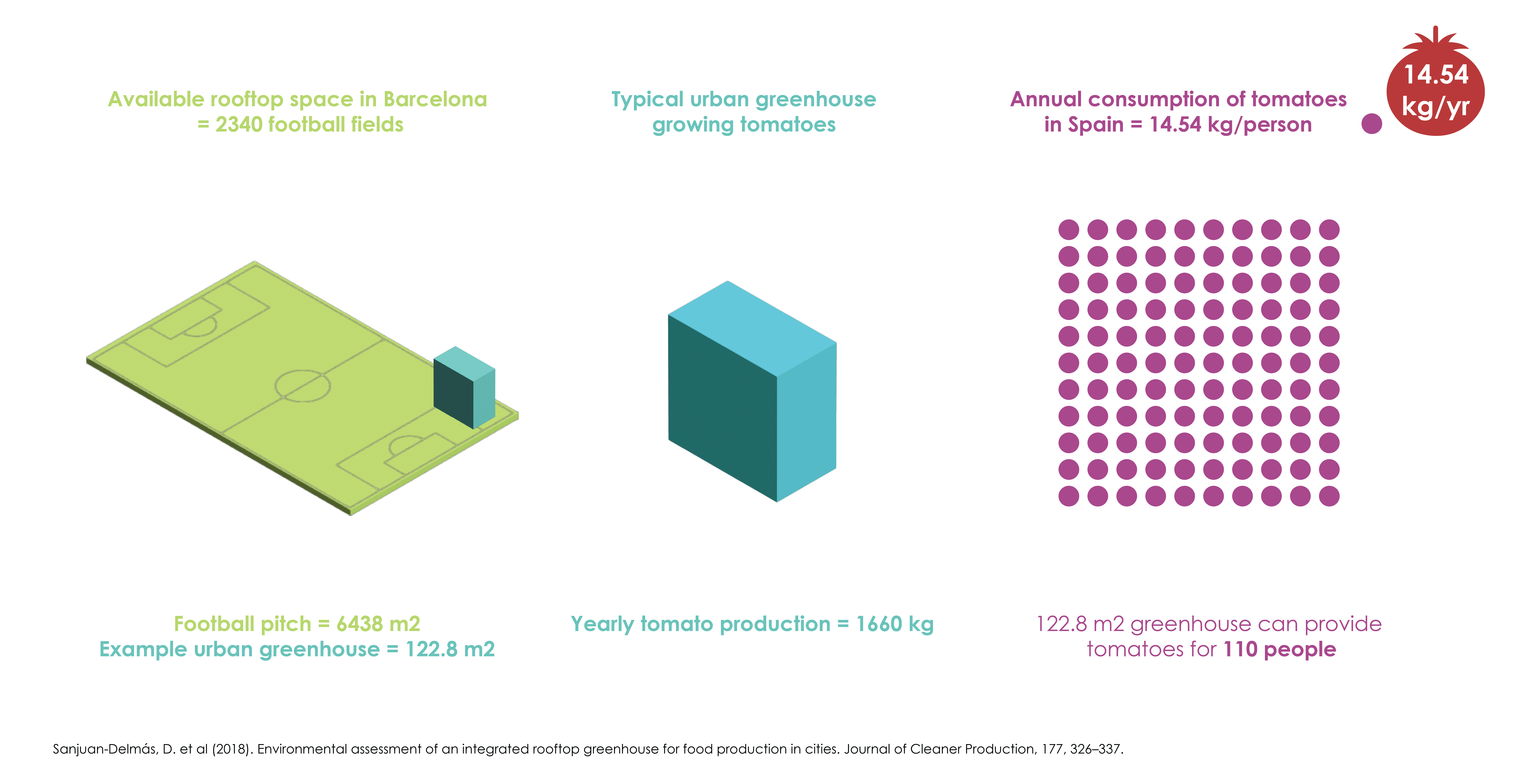
‘Occupying unused rooftops for agriculture has great potential for widescale implementation in urban areas, including major cities (Rodriguez, 2009, Astee and Kishnani, 2010). For instance, a city such as Bologna (Italy) could fulfil 77% of its vegetable requirements with rooftop farms with productivities of 15?kg/m2 (Orsini et al., 2014). The short-term implementation of RTGs on available rooftops in a logistic park in Barcelona with 13?ha of suitable rooftop area could produce 2000 tonnes of tomato annually, which would fulfil the demand of 150,000 people (Sanyé-Mengual et al., 2015a).’ 5
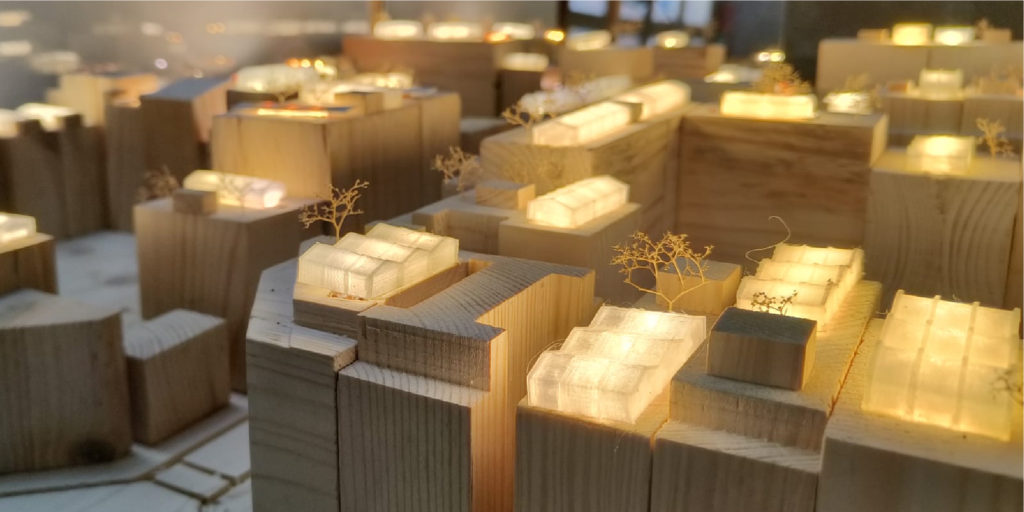
Our Collaborative Studio project looked to explore this by creating two urban scale-models which propose an urban agriculture model for two key districts in Barcelona.
Both physical models have the intention to provoke and open a discussion about how food production can be introduced into the city, not only on the ground, but also on and around existing buildings. Not only will this lead to a more self-sufficient city, but this will also increase the biodiversity in the city.
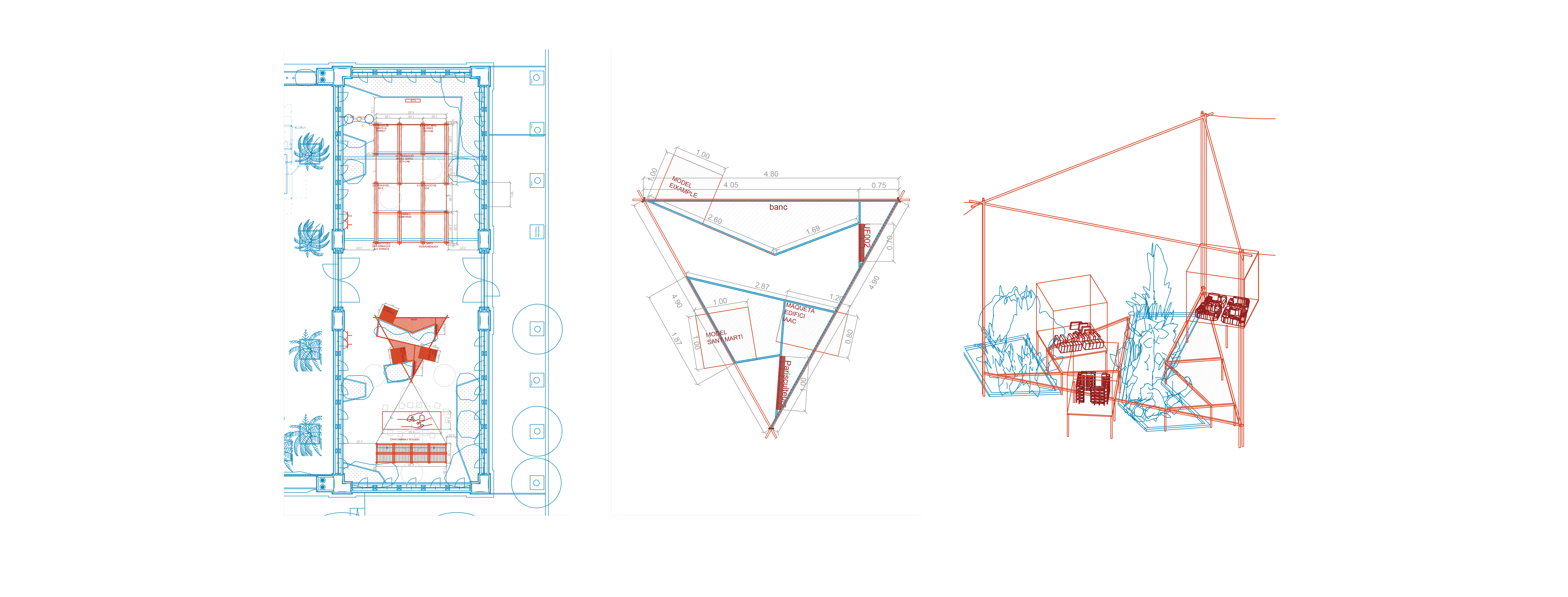
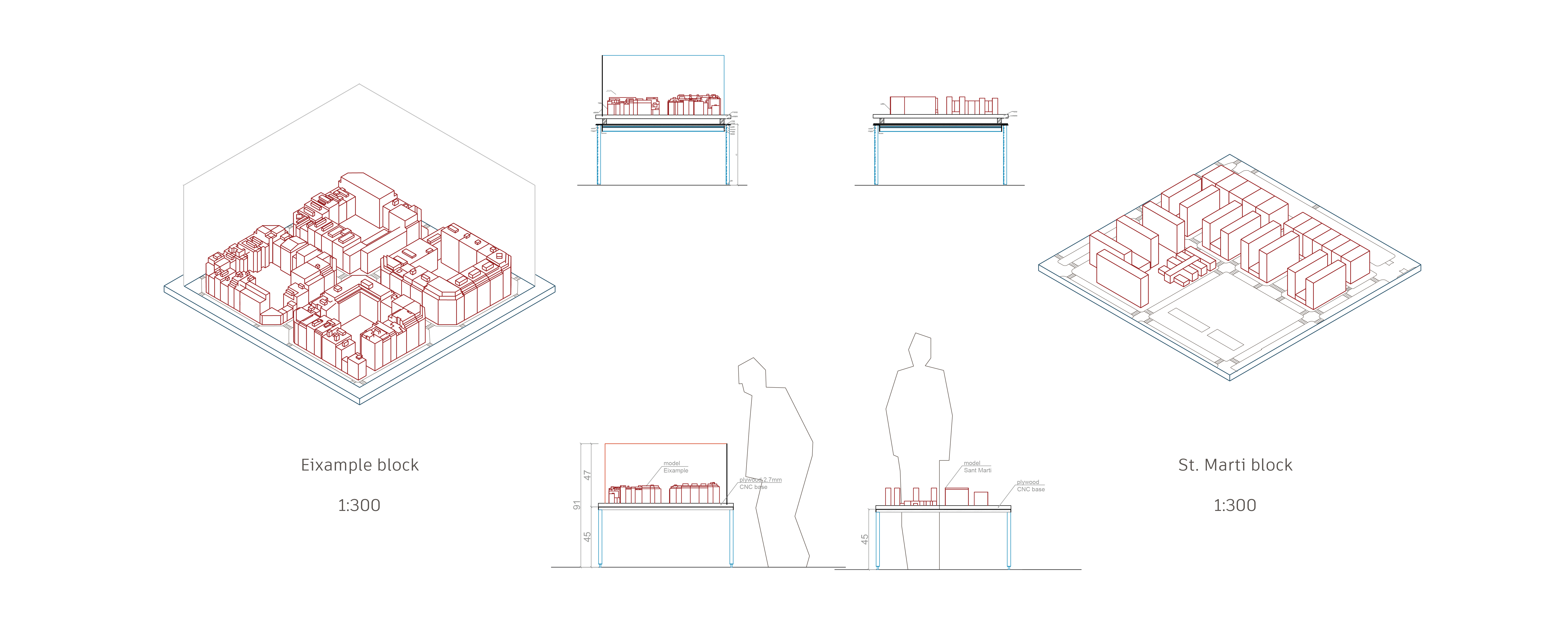
Urban Agriculture research and state of the art
At the outset of the project, we looked to the latest in urban agriculture design, planning and technology to include in our proposal. In vertical farming, rooftop greenhouses (RTGs) are greenhouses located on top of buildings. These can be either isolated from the building or can be integrated to the existing systems such as the water, energy and CO2 flow systems (Pons et al., 2015). Occupying unused rooftops for agriculture has great potential for widescale implementation in urban areas including major cities. Globally, rooftop urban gardens are increasing in popularity. We studied key examples from Brooklyn, NY, Paris and Barcelona.

A range of urban agriculture technologies and typologies are present in these examples, offering varying characteristics which answer to varying criteria in rooftop agriculture. Whilst the scope of our model was limited by its scale, we attempted to answer the following questions in our design process:
- How intensive should the food production be?
- What other benefits can a rooftop garden offer – for biodiversity, social value and to provide employment opportunity?
- Who will manage the space and how will any organization effectively operate?
- What technical modifications may need to be made to the building to support the required mass?
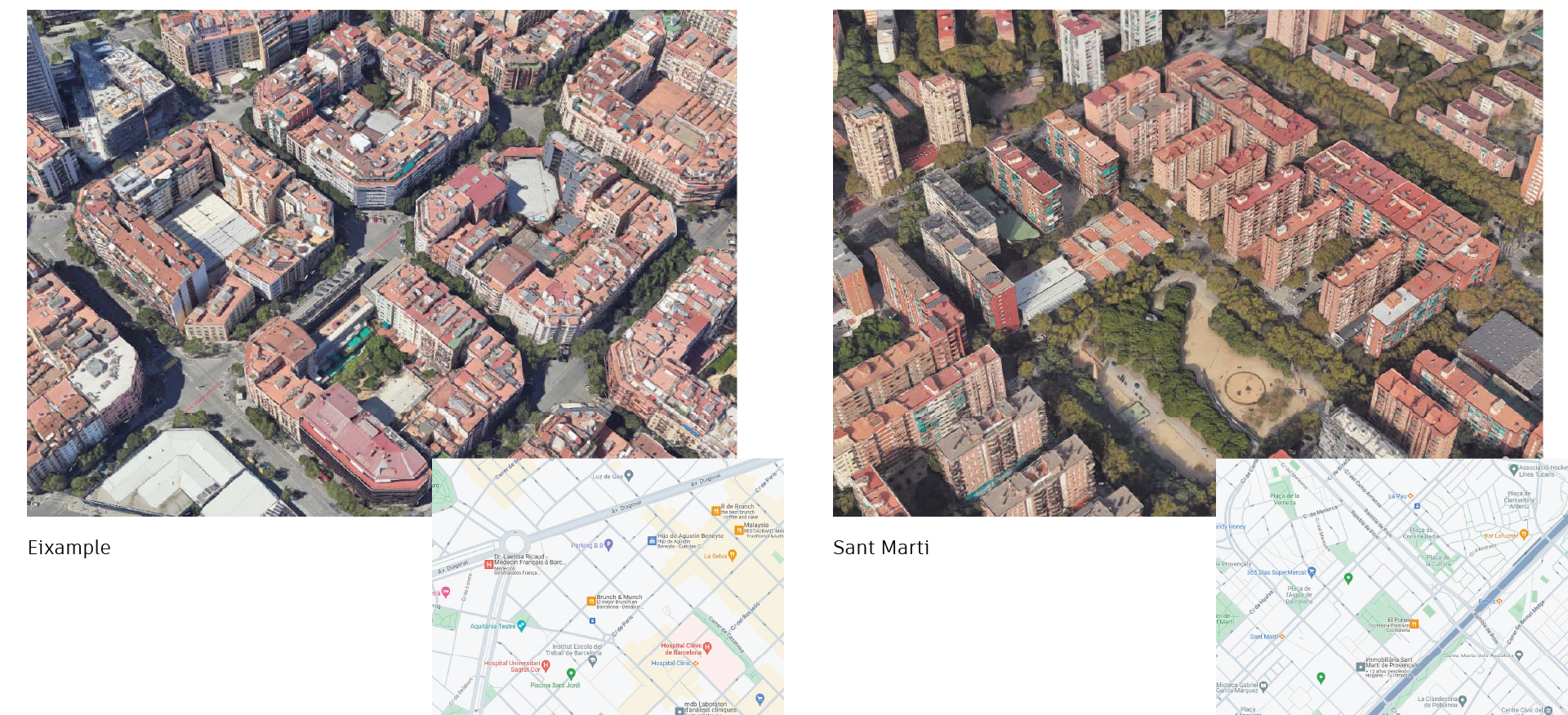
The two locations for our model, the Eixample and Sant Marti districts of Barcelona, present different opportunities, challenges and technical limitations for rooftop urban agriculture. Key characteristics such as available and uninterrupted rooftop footprint, access to residents, direct sunlight, building occupation density and building influence what type and technology to be most appropriate. With these considerations in mind, we explored a variety of solutions for the rooftop spaces in early concept form.
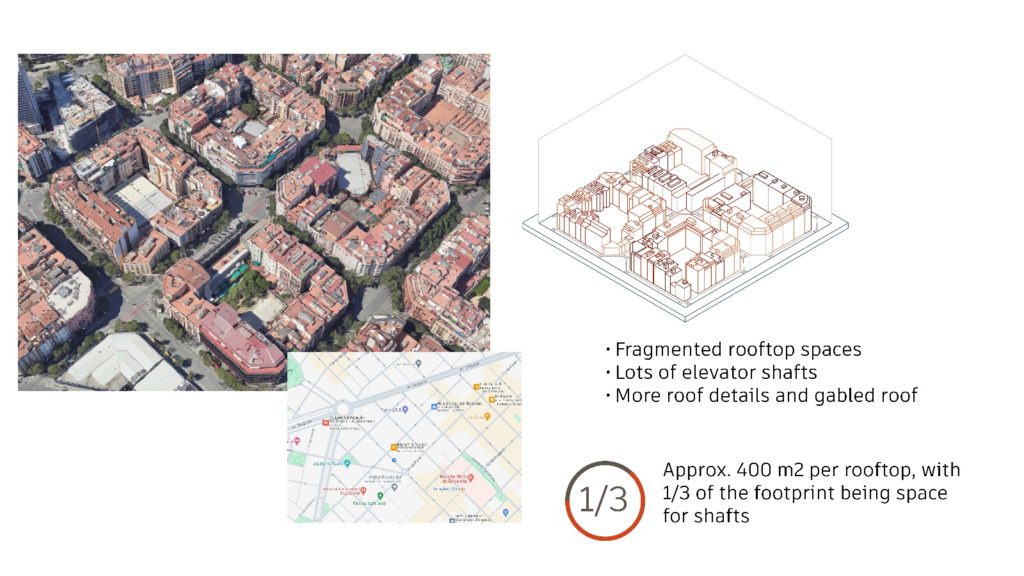
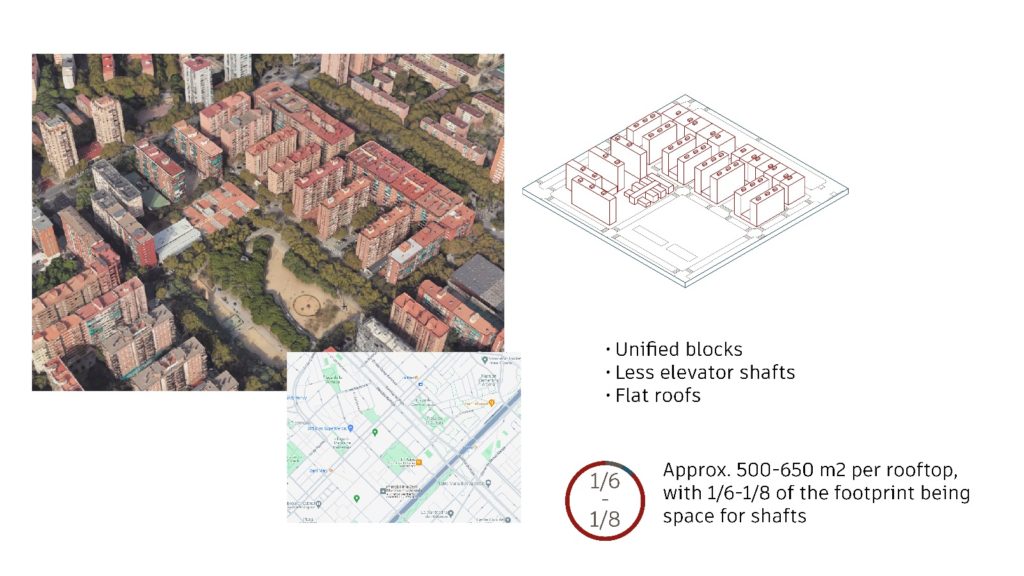
We can notice a difference between both blocks. For example, the Eixample blocks consist of much more fragmented and smaller rooftop spaces, while the Sant Martí block offers larger connected rooftops. Following these findings, we propose a more extensive, horizontal garden beds combined with hydroponics in smaller segregated greenhouses for the Eixample block like the Huertos in the Sky project. The Sant Martí block offers an opportunity for a more industrial-scale food production, using big connected industrial greenhouses like the Brooklyn Grange urban farms in New York City.
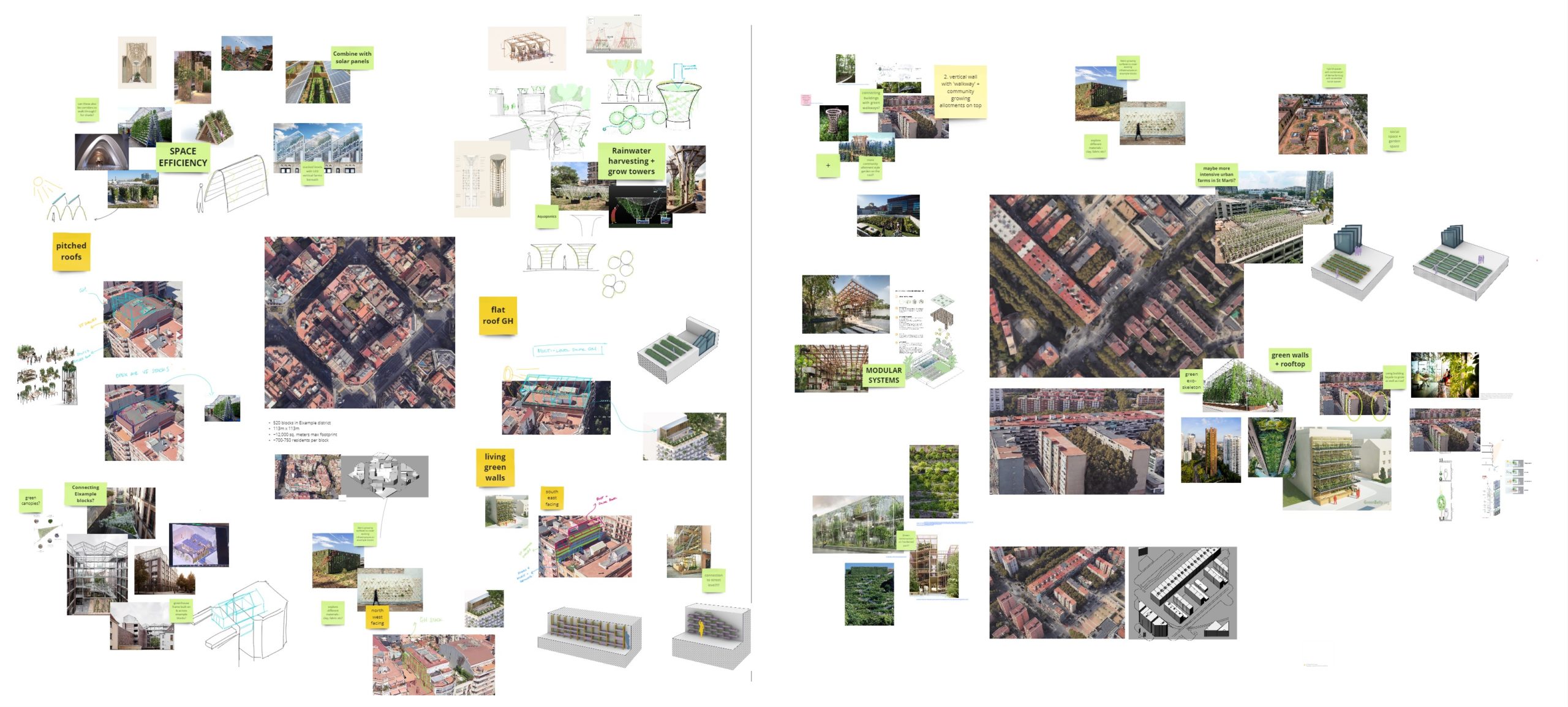
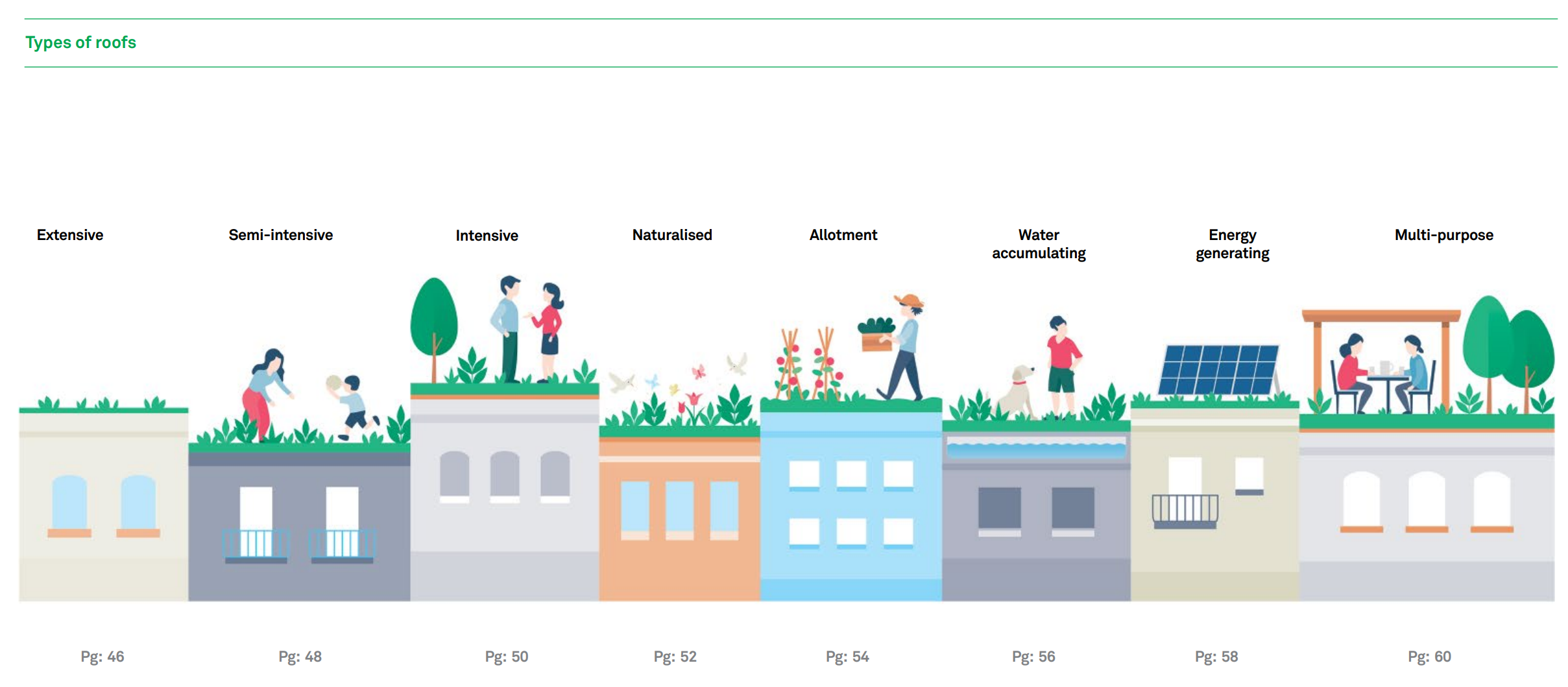
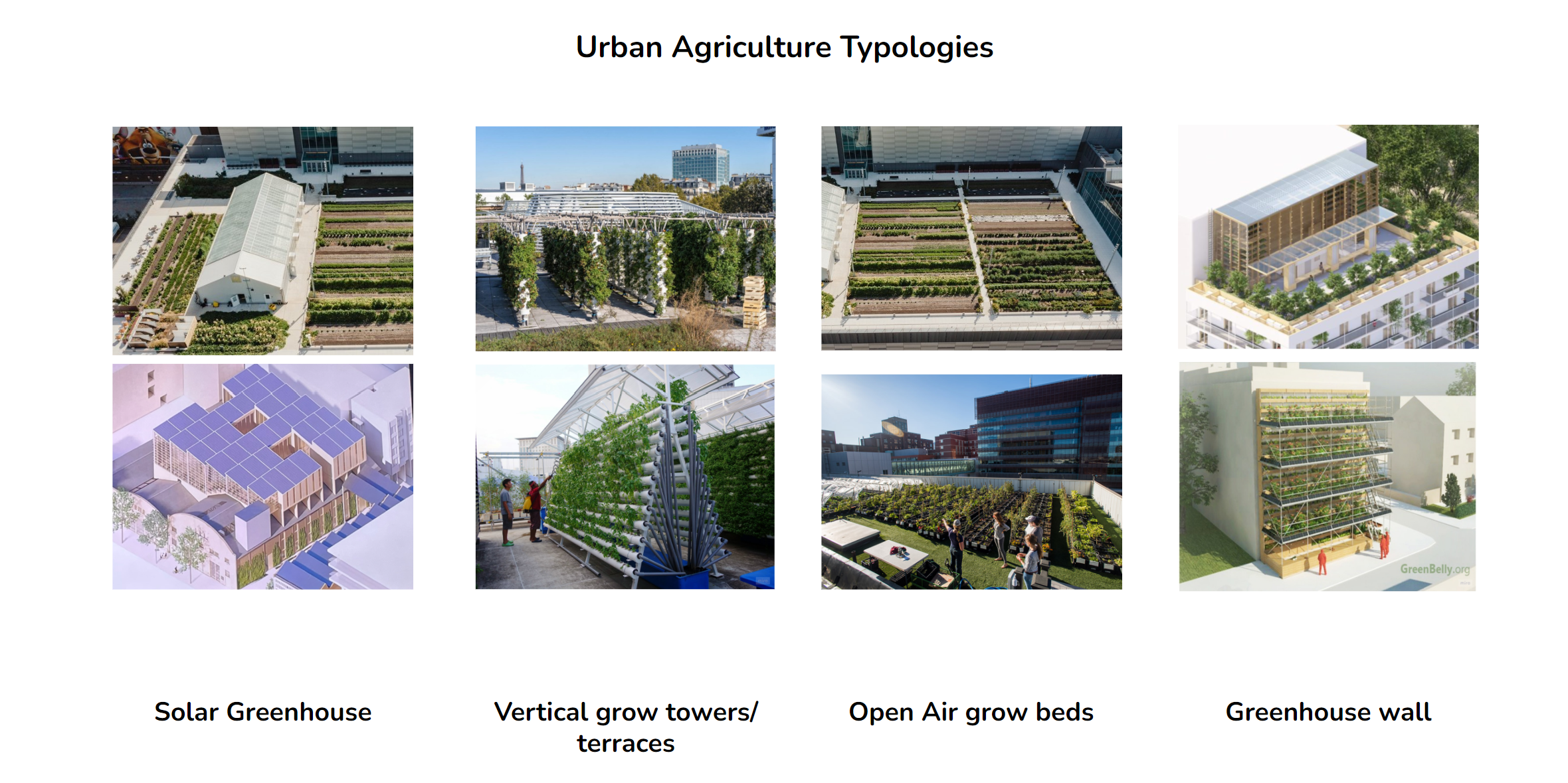
Scale model design, materials and process
We explored ways to represent our proposal in a scaled down format. Our model aims to show a typical Eixample and Sant Marti building classifications comprising 4 blocks. The chosen scale was 1:300, limiting the detail available to share our proposal. The 4×4 Eixample block model uses mirrors to repeat the vision of urban agriculture atop Barcelona rooftops.
To start, we explored a variety of methods to fabricate the building masses. We looked for methods which kept the main building masses as neutral as possible, as the intended focus of the model is on the rooftops and their urban agriculture systems. From this exploration, the method of solid building mass blocks was selected both for its aesthetic and opportunity to reutilize waste material.
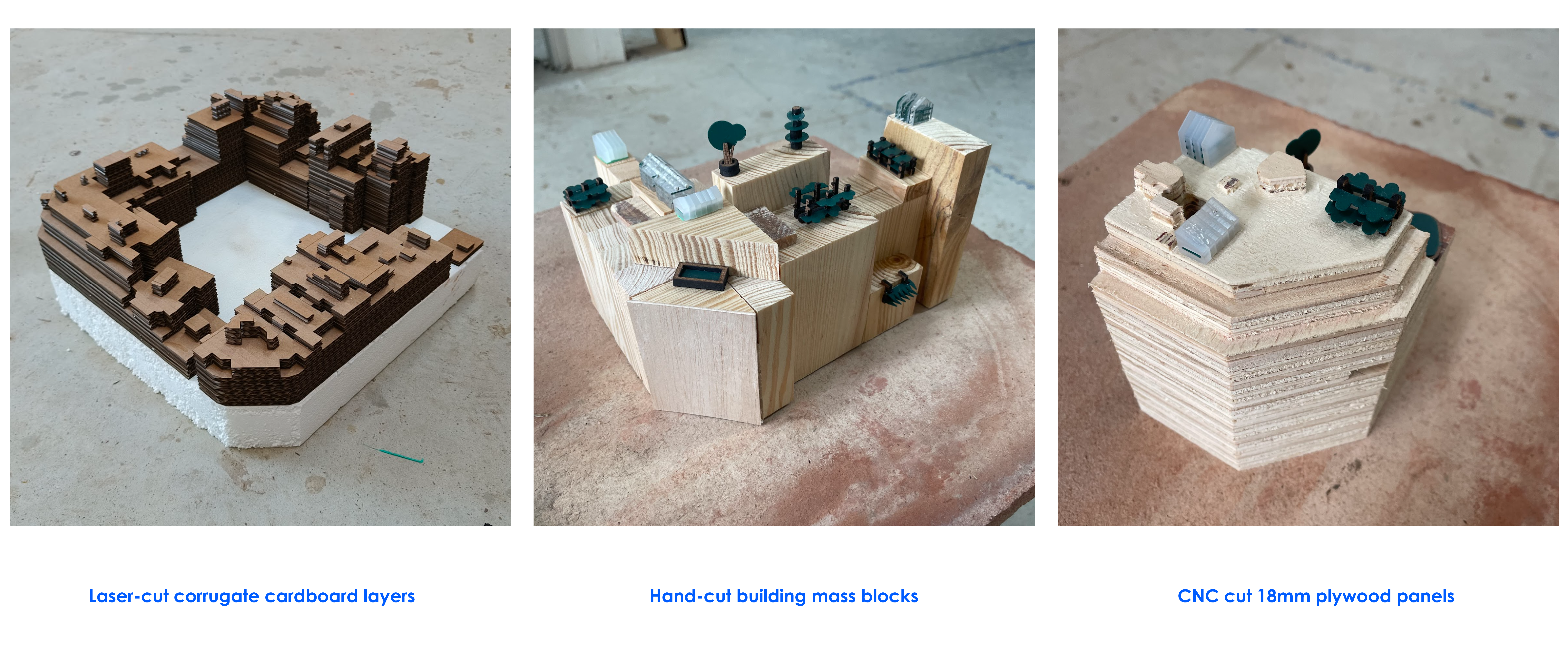
The model is predominantly comprised of Pinus Halepensis timber. Because we wanted our models to reflect our Valldaura values, we decided to make the building blocks out of the scrap wood from other groups. Their waste wood or mistakes ended up becoming our source material. Using solid wooden blocks to create building masses gives the model a unique aesthetic and a narrative link to the rest of the exhibition. It also connects to the broader ambition of our course – to be smart, resourceful and thoughtful with materials, utilizing waste where possible and creating innovative ways to find use for valuable, carbon-locking material.
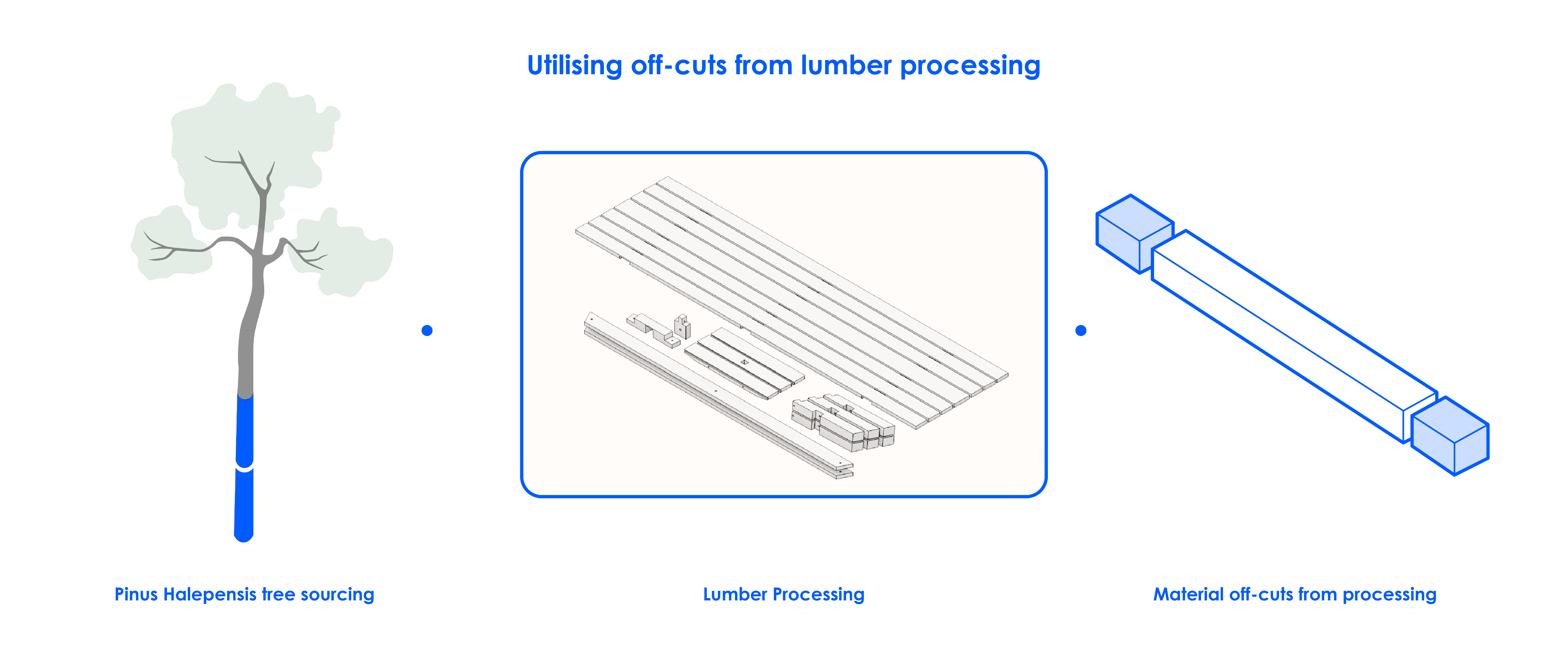
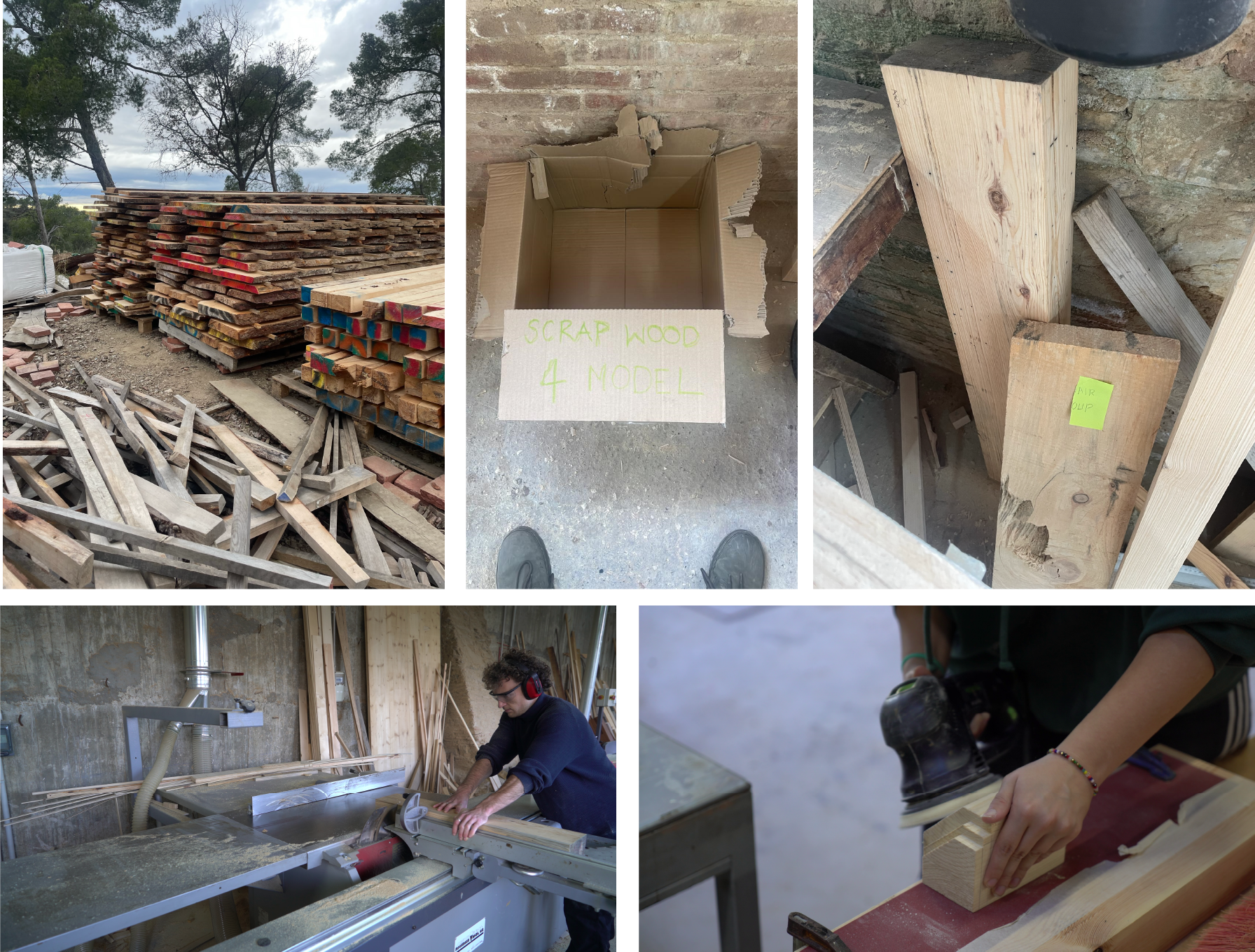
Meanwhile, we explored a variety of methods to represent urban agriculture typologies at the 1:300 scale we were working with.
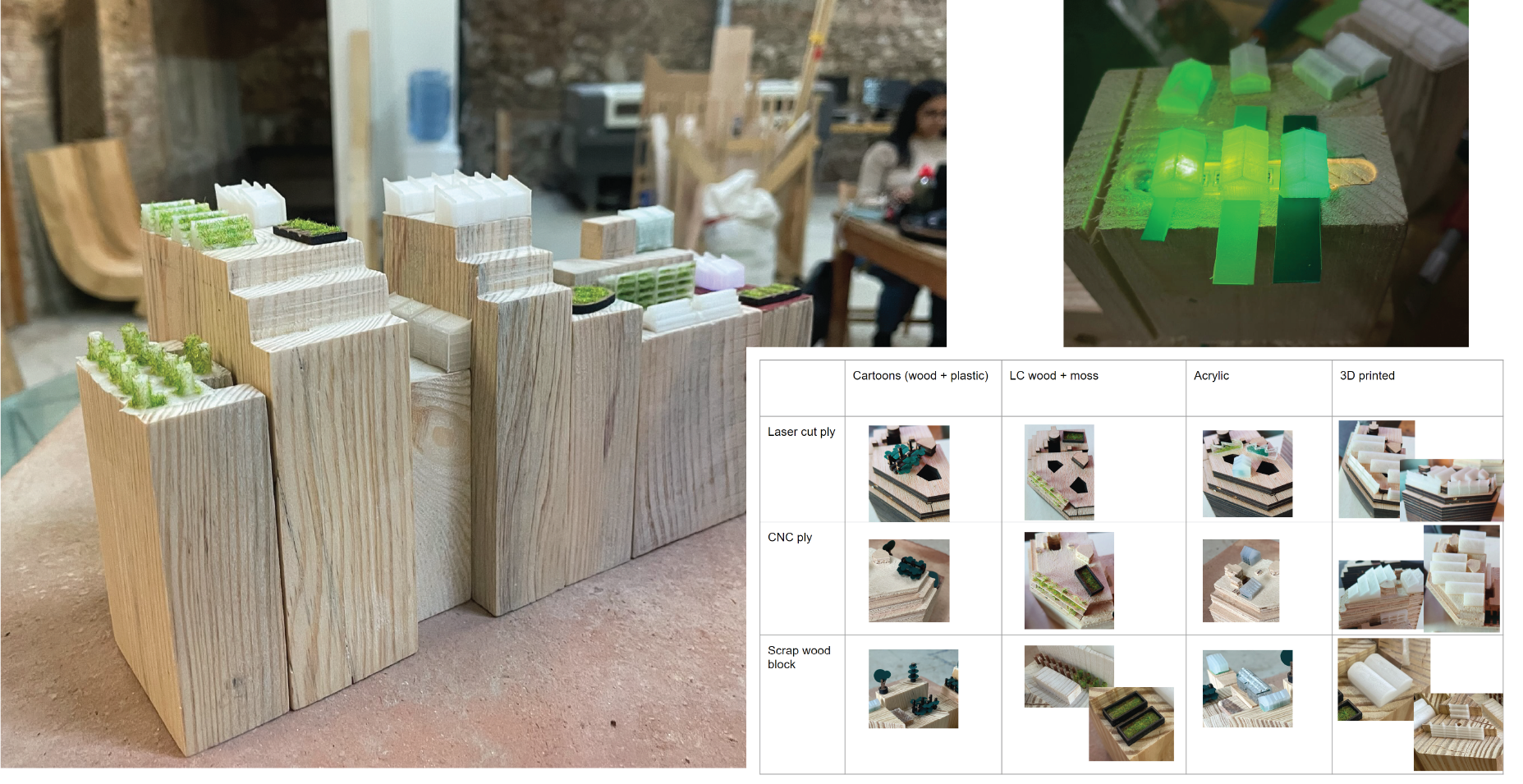
After several design reviews, it was decided that our 1:300 scale did not provide the detail required to represent the variety of typologies our research had led us to propose. It was decided to opt for a mere suggestion of greenhouses on rooftops using simplified, abstracted forms to represent each greenhouse typology. With the addition of LED lights, our model creates a spectacle and starting point on the discussion of urban farming, with the other materials in the rest of the exhibition providing other parts of this story.
Using this research and other tools used on the MAEBB program such as sunlight analysis through Grasshopper, we created a layout plan for our rooftops which was used to define the number and placement of Solar Greenhouses on our final models.
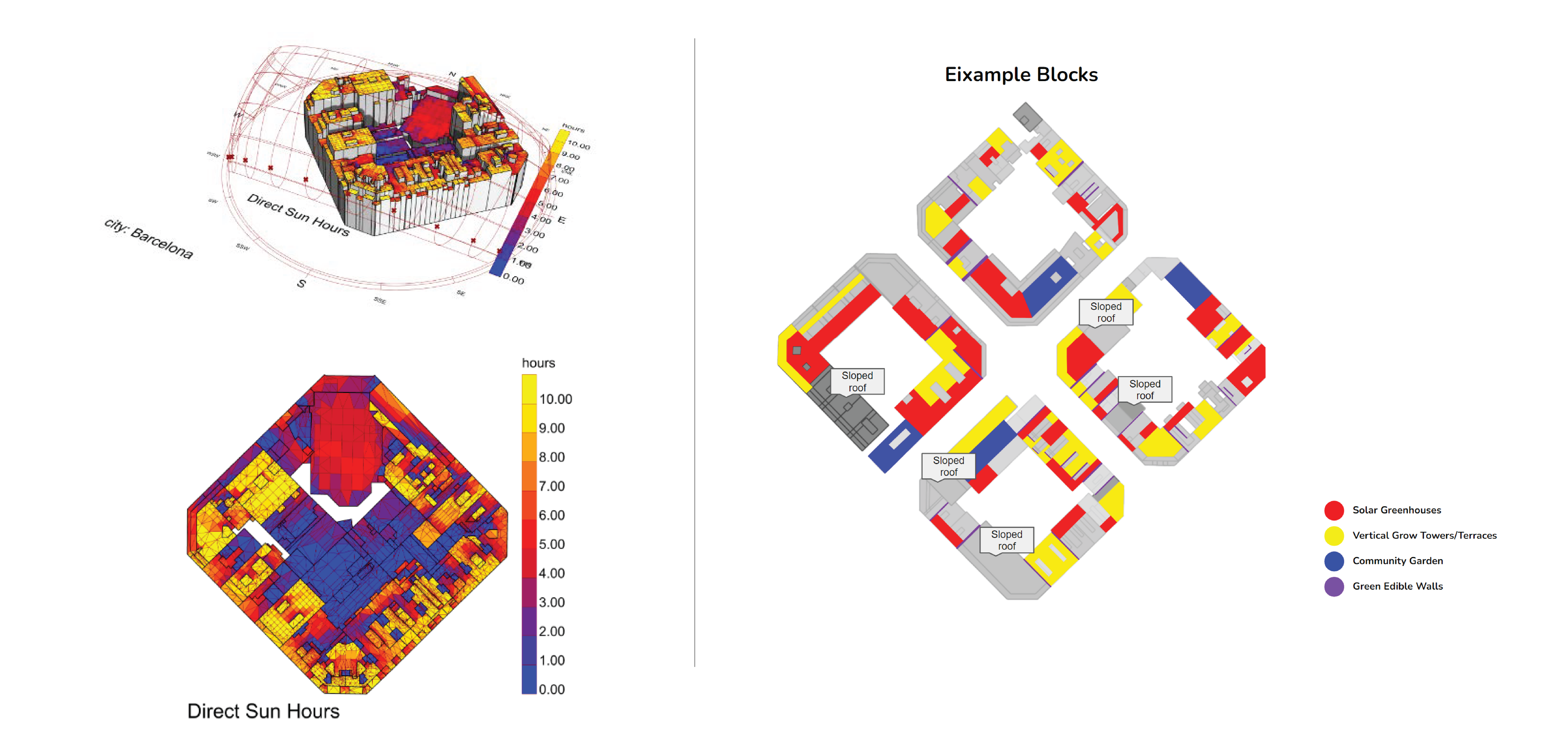
Our proposal for urban agriculture in Eixample and St. Marti
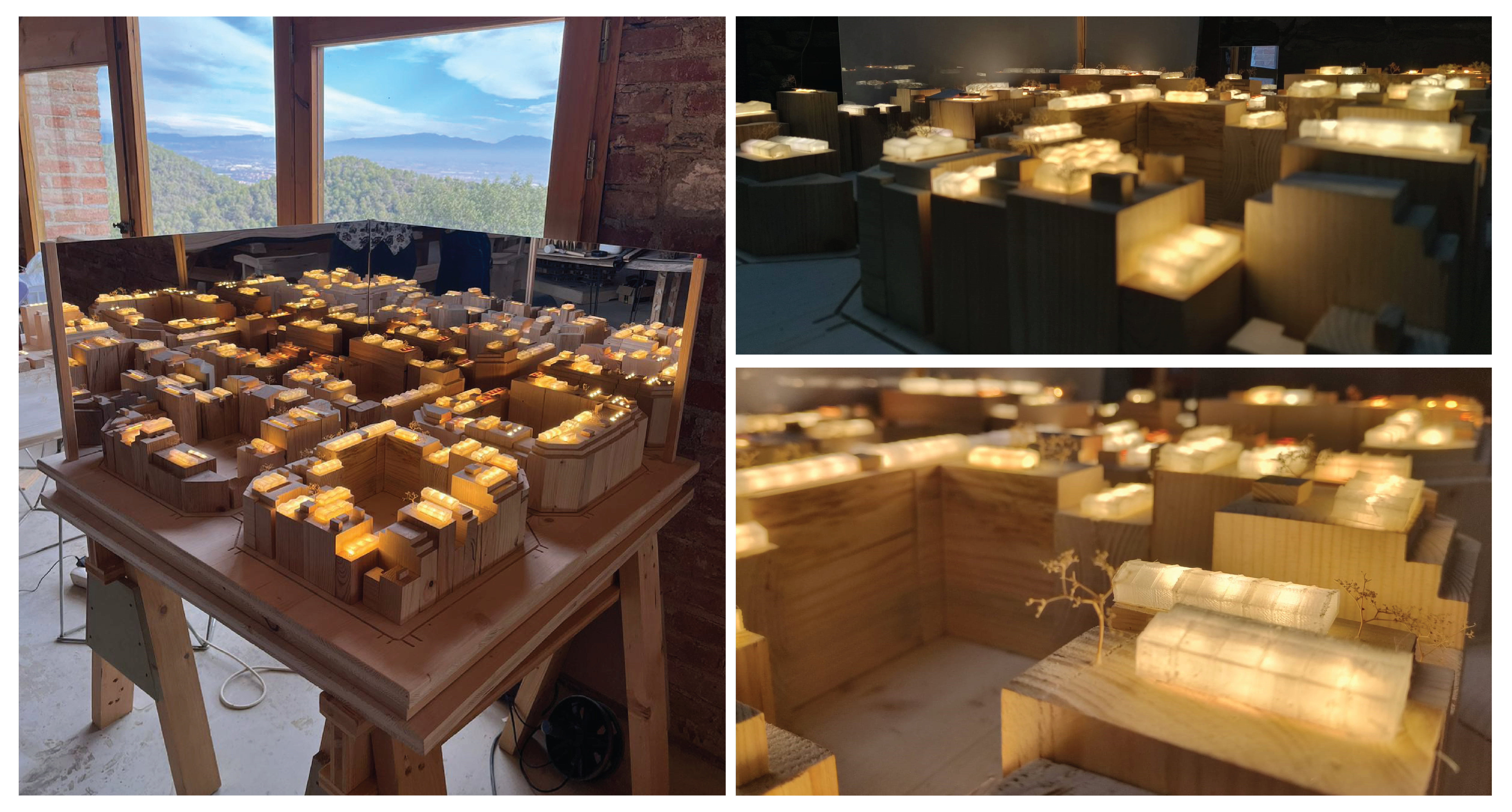
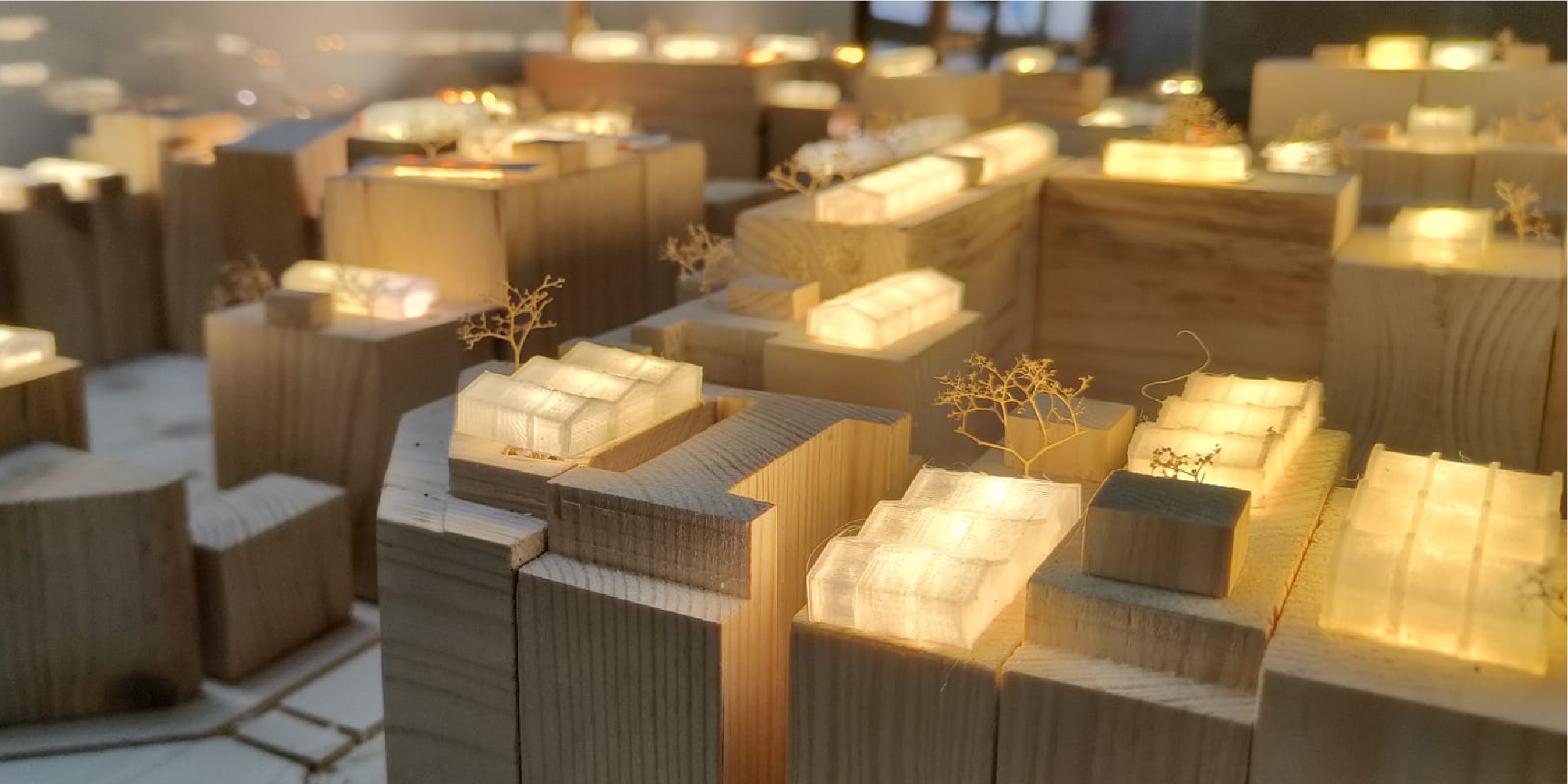
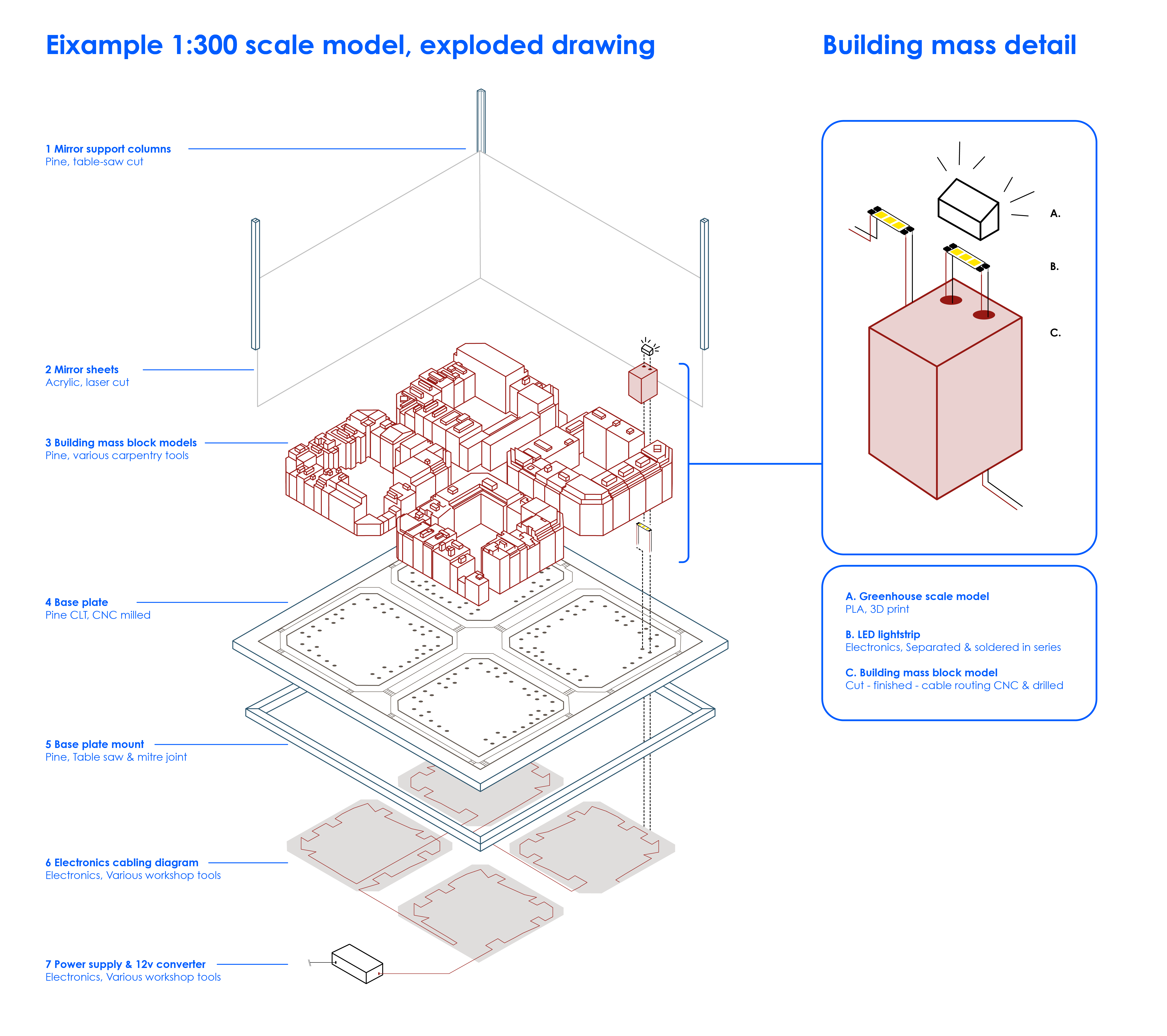
So, could urban agriculture through the utilization of Solar Greenhouses be a realistic vision for Barcelona? How much food production could we reasonably expect to achieve with this proposal?
Obviously such a question relies on a great deal of analysis – both technically and socially – to understand the intricacies of food production in an urban environment. However, taking the analysis presented earlier from the ICTA-UAB report into integrated rooftop greenhouse for food production in cities, we can arrive at an encouraging outcome:
Somewhere in the region of 700-800 people live in a typical Eixample block. (Eixample has a population density of 36k per km2 and a block is loosely 0.02km2.)
We included an average of 49 Solar Greenhouses per block in our Eixample model, at 16m2 each. That suggests a productive footprint on 1 typical Eixample block of 748m2 .
Looking at tomato production alone, the most consumed vegetable in Spain8, one Eixample block with this Greenhouse density & layout could produce enough tomatoes to feed ~700 people annually. The greenhouse layout of our model has the potential to offer food self-sufficiency for that Eixample block (self-sufficiency of tomatoes, at least.)
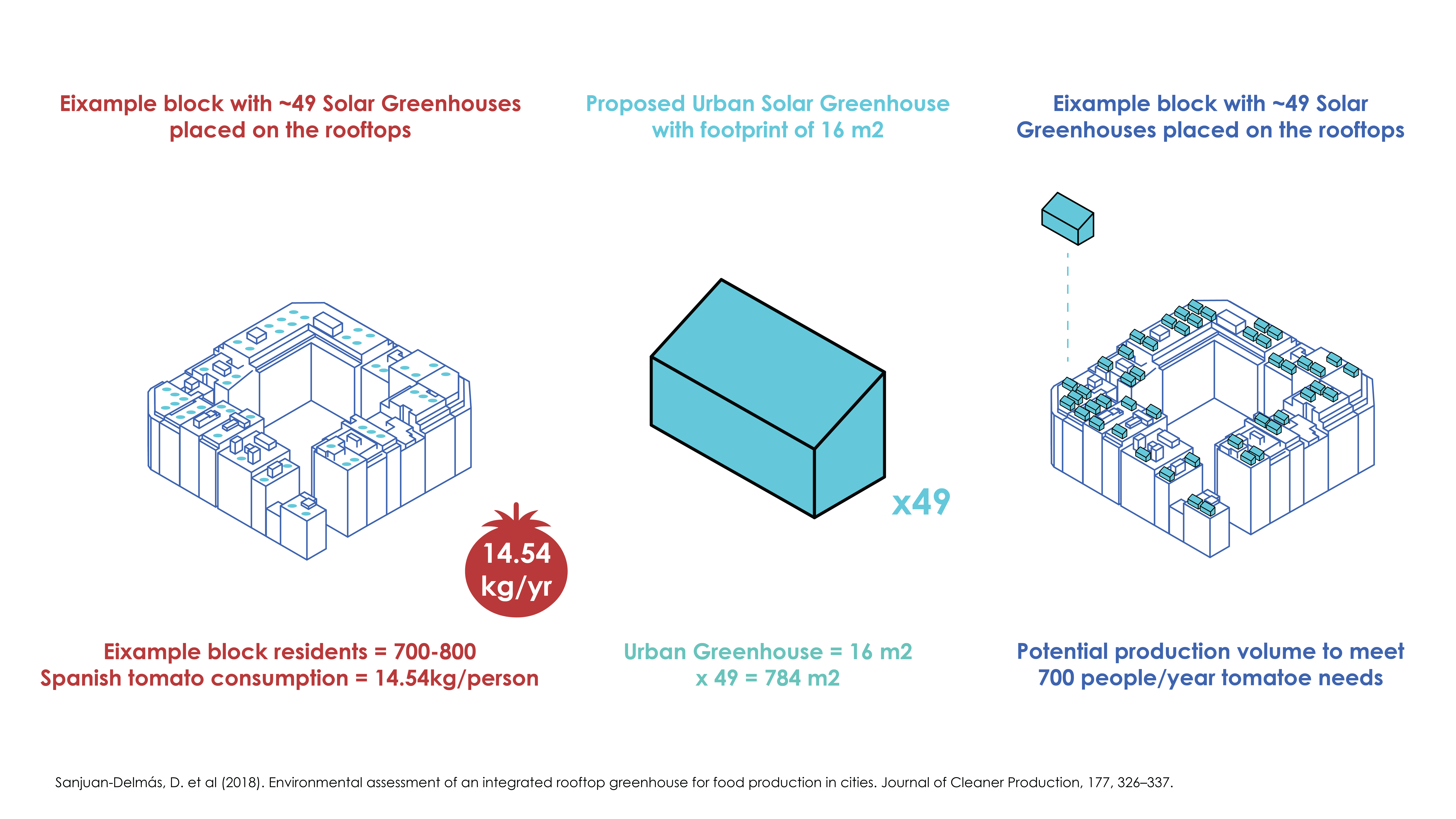
Whilst a huge array of factors will influence this calculation, our model provides a reasonable provocation to consider rooftop urban agriculture as a valid proposal to answer the food production needs of a city like Barcelona. Of course, people in the city eat way more than tomatoes alone, but we hope the calculation provides some useful comparison when seriously considering a proposal such of this. Clearly, more detailed analysis and design proposals should be considered, and we hope the exhibition next year starts the conversation to instigate that research.
Model Fabrication
Though our project is of a much smaller scale than that of other groups’, we managed to work with every machine available in the workshop. For the cutting of the wood, we mainly used the table saw, bandsaw and chop saw, with the occasional use of the jointer and thicknesser when provided with rougher pieces of wood. For the greenhouses, we explored with different aspects of 3D printing, such as the filament, infill settings and supports. To add the lights, we got a crash-course in electricity and learned to solder. Finally, for the base plate, we used the CNC machine, the router and drill.
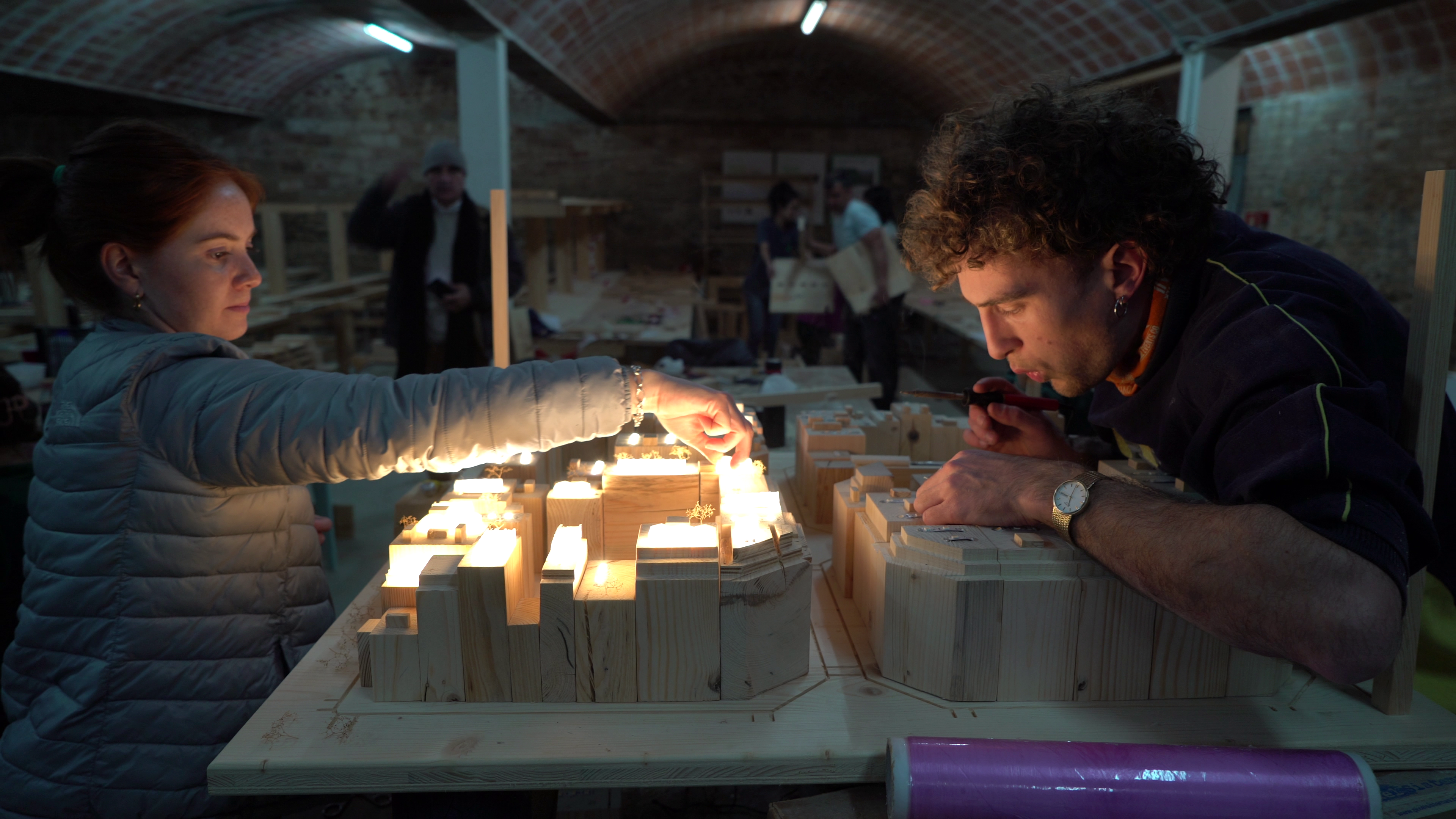
References
- https://tabledebates.org/blog/urban-agriculture-and-around-barcelona-why-and-how ↩︎
- https://worldpopulationreview.com/world-cities/barcelona-population ↩︎
- https://ajuntament.barcelona.cat/ecologiaurbana/en/what-we-do-and-why/green-city-and-biodiversity/nature-plan ↩︎
- https://bcnroc.ajuntament.barcelona.cat/jspui/bitstream/11703/98795/5/Guia%20de%20terrats%20vius%20i%20cobertes%20verdes%20angl%C3%A8s.pdf ↩︎
- https://www.sciencedirect.com/science/article/abs/pii/S0959652617331062 ↩︎
- https://www.sciencedirect.com/science/article/abs/pii/S0959652617331062 ↩︎
- https://bcnroc.ajuntament.barcelona.cat/jspui/bitstream/11703/98795/5/Guia%20de%20terrats%20vius%20i%20cobertes%20verdes%20angl%c3%a8s.pdf ↩︎
- https://www.statista.com/statistics/745474/fresh-vegetables-consumption-per-person-in-spain-2015-by-product/ ↩︎

